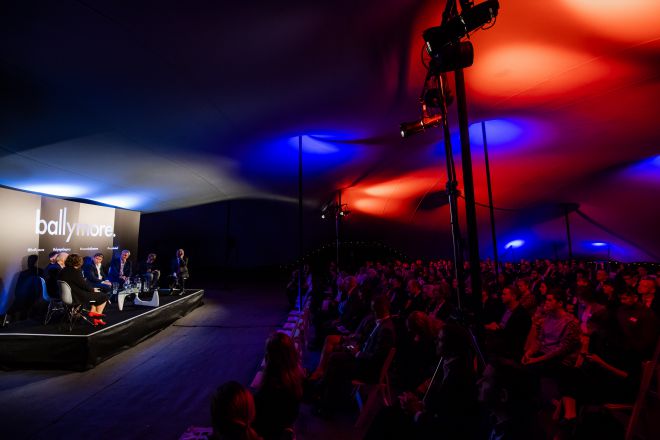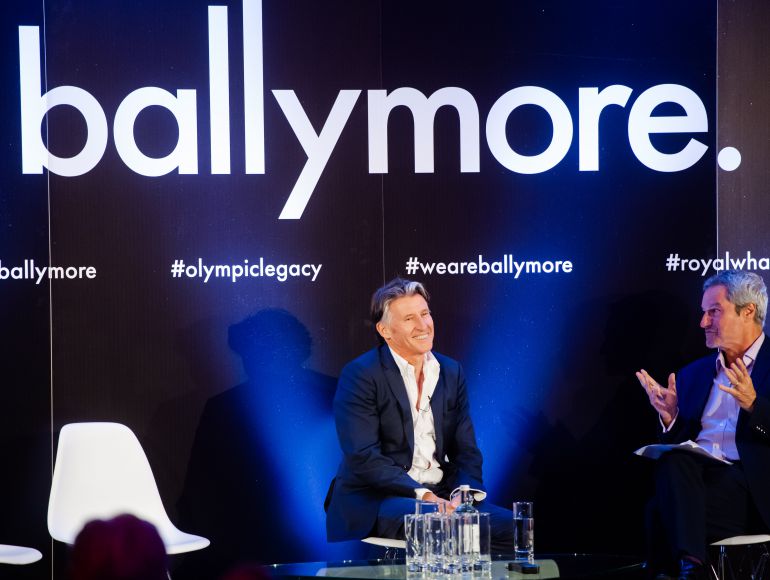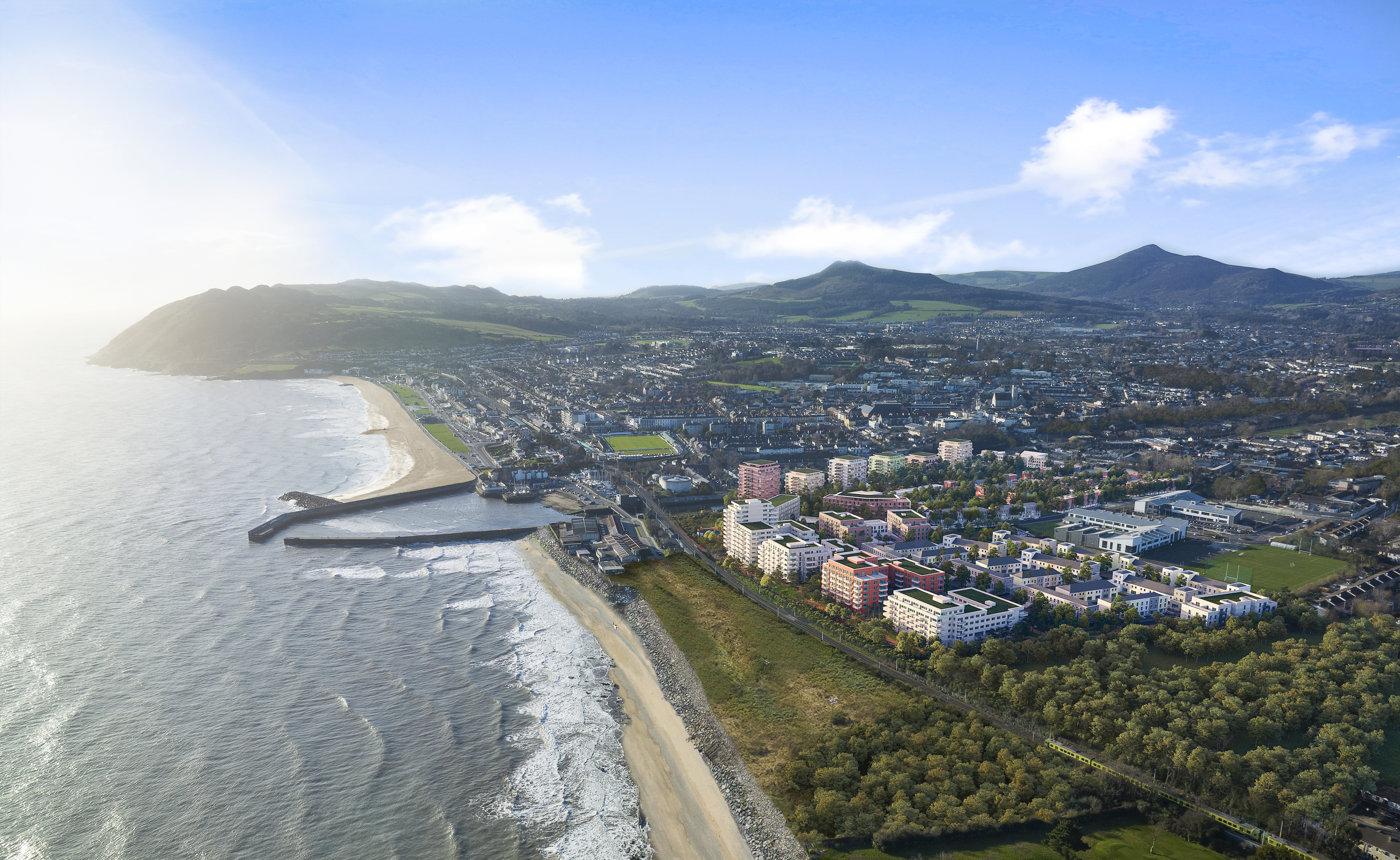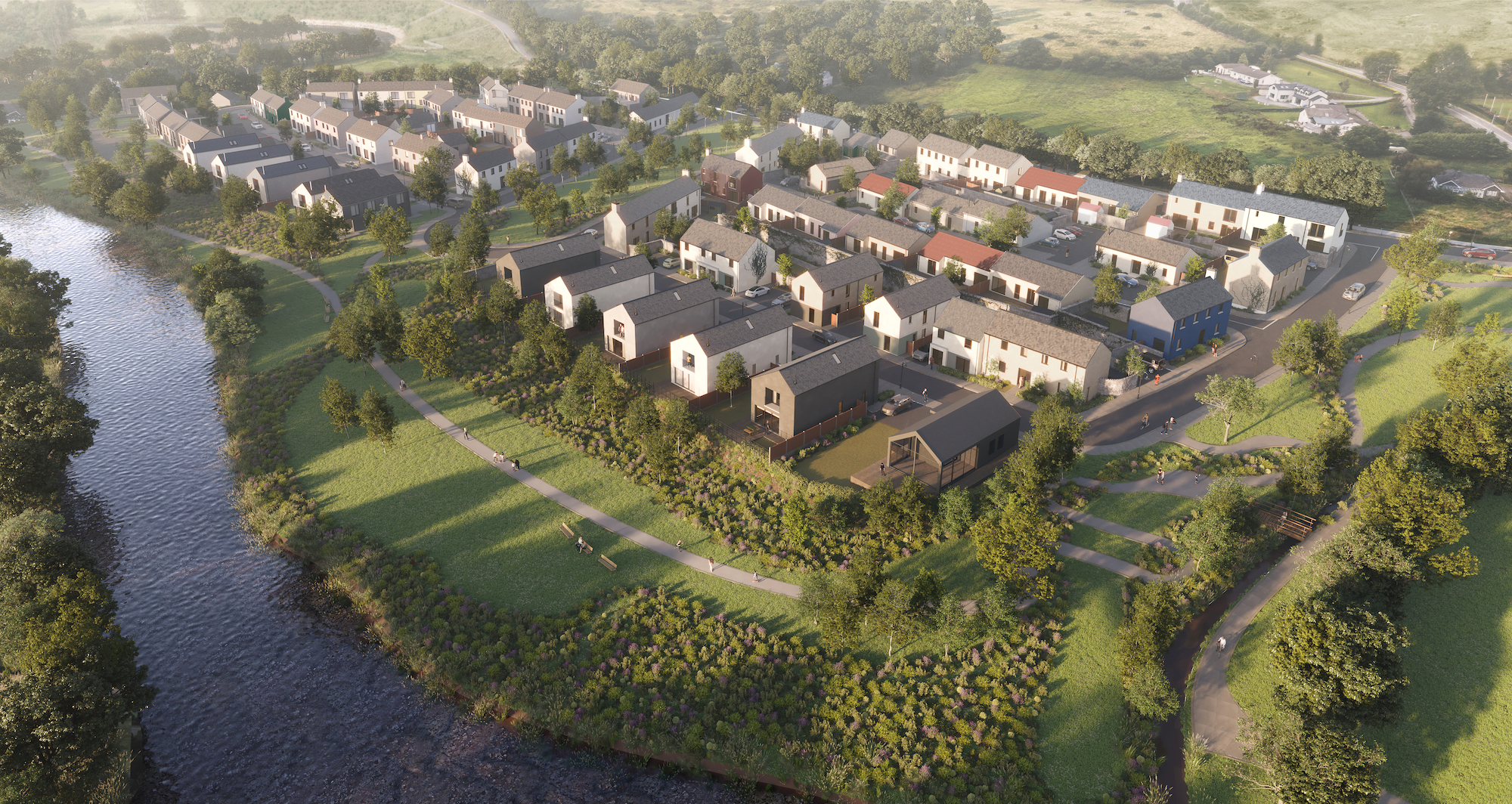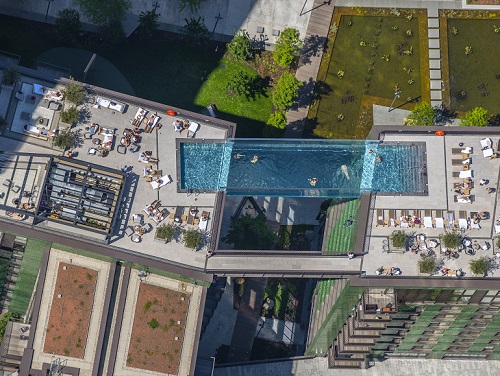Debating the London Olympics’ lasting legacy
Civic leaders, developers and town planners joined Lord Coe to assess how the Olympics became a game changer in the development of east London.
Lord Coe, the man who brought the 2012 Olympic Games to London, said “the litmus test” of the lasting legacy of the games was the massive building boom beyond the Olympic Park that had transformed London’s docklands 13 years on.
‘It’s been truly dramatic”, he told a 200-strong audience at a packed panel event on the enduring legacy of the games on the regeneration of east London chaired by BBC Newsnight presenter Gavin Esler and hosted by Ballymore, described by Lord Coe as “one of the first guys over the parapet” to invest in docklands and support the bid.
“I am not a town planner, I am not an expert in these fields – this is a room full of experts,” Lord Coe told the audience at Royal Wharf. “But for me the litmus test is the development that has taken place beyond the curtilage of the Olympic Park.
“The story quintessentially was not just about the development of that 520 acres – which is an incredible story – a new city inside an old city. But it is also when I come to these parts, which I do regularly, and see the catalytic impact of the Games. So, on the regeneration front, I think we got more things right than any other games since the Barcelona Olympics of 1992,” said Lord Coe, who confessed “an emotional connection” to the area as his father was born “streets away” from the Olympic Park.
Lord Coe recalled an early crucial meeting in the City to raise institutional support for the bid. “One of the reasons I am sitting here this evening is that, actually these guys – Ballymore - were the first to stick their heads over the parapet. The next morning, they were the first to say they want to support the bid, we think this is a really important thing to do, and then a few more came on board, EDF energy, British Airways, BT. But it took somebody to actually stand up and say how they saw this project developing.”
Ballymore’s Managing Director John Mulryan raised laughter from the audience when asked by Esler whether the company had been fearful of “the risks” of being the first “over the parapet.”
“Well, Ballymore had bought about 100 acres of land between the Royal Docks and the lower Lea Valley between 2000 and 2005, so when Sean (Ballymore’s Founder) agreed to support your bid, I think he had a slightly vested interest!”
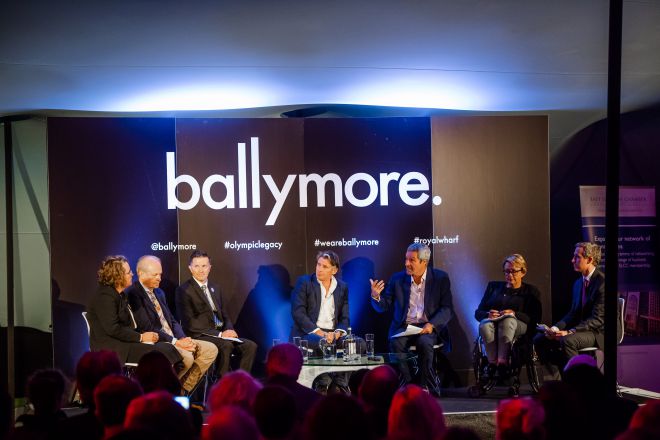
From left, Deirdre Armsby, Colin Stanbridge, Stewart Murray, Lord Coe, Gavin Esler, Baroness Tanni Grey-Thompson, DBE and John Mulryan
But even before the Olympics, Mulryan said, “you had the parks on one side and the River on the other, so everything you needed for a community was already there.” Paying tribute to the global success of the Games, he added:
“For us what was interesting when the Olympics happened was that with people looking in from the rest of the world, it was such a showcase for British people.” The result was “we managed to get almost £3 billion in development finance across London in those three or four years after the Olympic games. London became an amazing place to sell. That sort of institutional investment is not easy to get and I think the Olympic Games played a huge part in that.
“You’re also creating new areas in docklands, which is very different to developing infill sites in west London”, explaining in his welcoming remarks that at Royal Wharf, “as well as 3,500 new homes, a new high street, a new Town Square, a new pier is being created…an incredibly ambitious project and challenge.”
Also on the panel, Deirdre Armsby, former Director of Regeneration of Planning at Newham, said the borough had taken credit “for some pretty epic place-shaping for this area of east London”, adding that the Games had “accelerated the potential and put the spotlight on the area’s rich history. And this development here at Royal Wharf exemplifies that perfectly.”
Colin Stanbridge, Chief Executive of the East London Chamber of Commerce and Industry, agreed that the games had “turbocharged the focus on east London – and that “immutable deadlines” had “condensed the experience” of developing east London.
Stewart Murray, Strategic Director Economic Growth, in the neighbouring borough of Waltham Forest - set “to become London’s first borough of culture” - accredited the “Olympic bounce with transforming the lives and life chances” of many east London communities.
Paralympian Baroness Tanni Grey-Thompson, DBE, now Director of the London Legacy Development Committee, holder of 30 world records, said:
“For me what’s been transformational is just seeing how it’s grown and thrived. Every time I go there, it feels like there’s something different. There’s been 281 apprenticeships, 6,000 new homes, there’s planning permission for another 14,000, 4,000 built in the next 18 months; investment in East Bank, it’s going to a billion pounds, BBC Orchestra’s coming, the V & A, The Smithsonian, Sadler’s Wells, Loughborough University, UCL – and it’s changing people’s lives.
“And it’s more than just the buildings, it’s about making sure local people are employed – 62 per cent of the people come from the local area, so it’s not just about dumping something and hoping it’s going to be fine. There’s a huge amount of work that goes on behind the scenes.”
